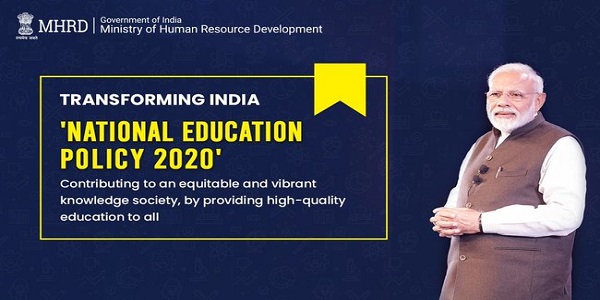The New Education Policy of India

Brief Summary: This article explains the new National Education Policy of India. It investigates the changing landscape of education in the country and a growing reliance on online learning.
Introduction
This is an exciting juncture for the education system of India. On one hand, it is bidding adieu to an old and outdated model and embracing the new National Education Policy 2020 (NEP). On the other hand, digital learning and innovation in teaching are poised to help Indian education achieve global standards.
Education is any country depends for it’s success on the quality of human capital. A generation educated well and wide is better armed to take the country forward. They are also more equipped to be aware of global issues.
This is the vision the NEP 2020 is based on. This policy strives to make education more holistic and more rewarding. Let us try to understand this policy, and the future, better.
NEP 2020 : A New Model
The National Education Policy 2020 will undertake to revamp the curriculum structure and assessment criteria of the country’s education system. It invokes a new approach to education. The following are the projected benefits of NEP 2020:
- Strong Learning Foundation: According to research, 85% of the cumulative brain development of a child takes place by the age of six. The NEP has taken into account this research and formulated a new 5+3+3+4 module. The first five years of education are devoted to foundational learning, which will enable children to form a strong base. The following three stages are the preparatory, middle and secondary stages. The academic growth of students will be regularly assessed through these stages.
- Holistic Development: For years, a large part of the Indian education system has relied on rote learning, focused solely on passing examinations. The NEP 2020 proposes to change that, and shift the focus to in-depth, conceptual understanding. There will be more space for critical thinking and discussion. Education is set to be more interactive and collaborative.
- Flexibility: Another characteristic of Indian education has been the clear division of streams of studying. If a student wishes to pursue the arts, they cannot learn mathematics beyond a certain level. Or if a child wants to study both chemistry and English in depth, that wasn’t possible. The NEP will provide students with greater flexibility when it comes to choosing subjects. It proposes to erase the divide between the streams of arts, commerce and the sciences.
- Development of Skill: From classes 6 to 8, students will be offered a year-long course to learn carpentry, gardening, pottery, electrical work, metal work and many other skills. This will equip students with practical skills and make them better prepared to earn a living.
- Better Assessment: The NEP 2020 standardized state school examinations in three grades: class 3, class 5 and class 8. The Board exams for classes 10 and 12 will remain unchanged. There will also be exams to test literacy, numeracy and foundational skills.
A New Form of Education
NEP 2020 will make education even more innovative, and act as a boon to digital education. The curriculum proposed by the NEP will nudge schools to overhaul their infrastructure and accommodate new, advanced facilities.
The NEP makes it compulsory for all teachers and principals to take a minimum of 50 hours of Continuous Professional Development workshops every year. This will ensure that their teaching skills and techniques are being honed regularly.
The new education policy proposes to form an autonomous body called National Educational Technology Forum. This body will act as a platform for the exchange of ideas and the use of technology. It will enrich the entire education system.
- learning platforms like Diksha, Swayam and Swayamprabha will provide digital educational content. There will be an increased focus on blended learning.
It will be mandatory for teachers to educate themselves on digital knowledge, because they have to create synchronous and asynchronous lessons.
Model Schools
In the Union Budget 2021-’22, it was announced that 15,000 schools across India will be strengthened qualitatively, so that they can implement the NEP 2020. These schools will serve as model schools, so that others can follow their lead.
Conclusion
The success of the NEP 2020 lies a great deal on effective execution. The education sector has to harness the forces of teaching as well as technology, to reap the full benefits of the new education policy. This will strengthen the Indian education system and in turn, ensure a bright future for the country.









